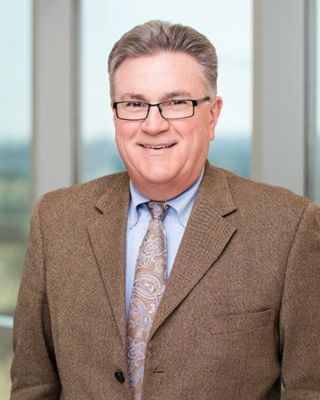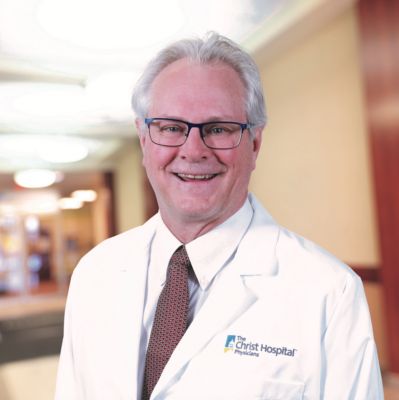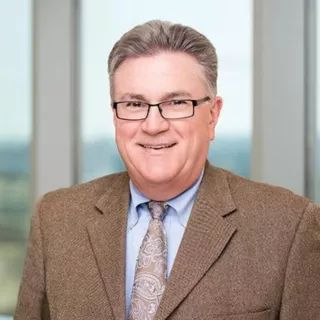
Expert insights into the future of cardiology: What is the path forward?
- Featuring Philips
- March 03 2025
- 5 min read
Cardiovascular care stands at a critical juncture marked by both clinical innovation and shifting healthcare paradigms. Tim Attebery and Tim Henry spoke on the key challenges and trends facing cardiovascular care, during a Philips-sponsored expert forum. Through Attebery's executive lens and Henry's clinical expertise, we can piece together a roadmap for the future of cardiology. Addressing these challenges head-on can pave the way for improved patient outcomes, more efficient care delivery, increased job satisfaction and a brighter overall future for cardiovascular care.
At-a-glance:
- Explore the current challenges of healthcare economics and population health.
- Understand the obstacles facing healthcare providers, such as staff shortages and decision-making authority.
- Learn how physicians can lead the way in overcoming these challenges to provide sustainable high-quality cardiovascular care.

The alarming economics of cardiovascular health
Dr. Attebery launched into the conversation with a stark comparison: the U.S. spends around $320 billion on cardiovascular services every year1, equivalent to the GDP of the Czech Republic. This striking statistic underscores the gravity of cardiovascular disease on the national economy, a concern that cannot be overlooked by healthcare leaders. The distribution of these funds is telling. A disproportionate amount is funneled towards inpatient services, yet Attebery pointed out that a mere "5% of the patients with some form of cardiovascular disease drive 50% of the cost."2 Understanding this demographic is crucial, Attebery continued, as these are the patients we can predict, the ones we can strategize around to mitigate costs effectively.
About 5% of the patients with some form of cardiovascular disease drive 50% of the cost.2

Tim Attebery
CEO, Cardiovascular Associates of America
Attebery continued to warn of the rising costs and the looming insolvency of Medicare, while hospitals struggle financially. The interplay between payers and health systems, the advent of AI and digital solutions, and the migration of care out of the hospital setting are reshaping the landscape in which cardiologists operate.
Addressing patient challenges head-on
With the changing landscape of cardiology established, Tim Henry shifted the focus to population health, presenting societal challenges that compound cardiovascular care. "Sixty percent of the country now has a BMI that fits as obese [or overweight]4, and nearly 40% are diabetic, or getting there,"5 he stated. Alcohol and drug use also pose significant challenges for both patients and healthcare providers. These lifestyle-related diseases not only contribute to rising costs, but also complicate the delivery and effectiveness of cardiovascular care, highlighting the urgent need for solutions to tackle these underlying conditions from a whole-health perspective.
Moreover, the complexities and inefficiencies of health insurance, with its maze of pre-authorizations and lack of transparency in coverage, stymie both patient access and provider ability to deliver timely care. Henry called out a glaring misalignment of incentives: patients who need critical care and medications are often denied access due to insurance roadblocks. He advocated for a radical shift in incentives — one that prioritizes preventive care and rewards compliance. In Henry's view, it is crucial for cardiology leaders to advocate for simplified insurance systems and improved coverage to ensure equitable access to cardiovascular care for all patients.

A lesson in community health engagement
In New-Ulm, Minnesota, with a high rate of heart attacks, Henry recounts a bold initiative to curb cardiovascular events. Despite free screenings and public health campaigns that successfully led to an overall improvement in the management of blood pressure and lipids, the initiative revealed an immutable truth: a significant portion of the population remains indifferent to preventive measures. The result: a dichotomy where the 70% of patients who engaged with the program saw improvements, while the remaining 30% continued on their detrimental health trajectories.
"You can't make people do what they don't want to do," Henry reflected, pointing to the complexities of behavioral change in health. Henry's sobering reminder is that sometimes, despite our best efforts, there exists a fraction of the population who will be resistant to change.
The provider's plight: Responsibility without authority
While patients face many challenges, healthcare providers also encounter obstacles that impede the deliveryof high-quality cardiovascular care as well as staff well-being and retention.
Both experts say the current shortage of healthcare workers, exacerbated by the COVID-19 pandemic, poses a dire threat to the stability of hospitals. Henry pointed out that the economics of healthcare are in distress, with increasing costs and decreasing Medicare reimbursements. Hospitals are struggling to recruit and retain physicians, nurses and other providers in the healthcare profession.
Henry suggested that a key factor behind these trends is that cardiologists often find themselves in a conundrum of responsibility without authority, struggling under the weight of internal bureaucracy and decision-making opacity. He reflected on the choices and consequences of this balance, noting that the absence of authority in decision-making leads to a disenfranchised workforce and decision-making paralysis within institutions.
"When I ask this very simple question, 'How do we make decisions here?' currently, there is not a clear answer," Henry expressed, encapsulating the frustration felt by many in the field.
Attebery agreed, bringing attention to the corrosive effect of internal bureaucracy on physician morale and productivity. Internal bureaucracy within healthcare systems and external bureaucratic pressures erode the time and resources of cardiovascular specialists — one of the most valued assets in a hospital, according to Attebery. He contended that much of the frustration and burnout experienced by cardiovascular physicians stems from fixable workflow inefficiencies, not workload alone.
"You can take a rock star physician and put them in a suboptimal environment, and they won't be a rock star anymore, because the culture is a restraining force," Attebery said. Burnout is not a function of how much work you're doing, he suggested. It's a function of your engagement and your psychological connection to the work. The solution lies in nurturing a culture where cardiovascular specialists feel valued, engaged, and part of a mission.
Wrapping up the discussion of provider challenges, Henry stressed the importance of direction in healthcare using a famous quote from Yogi Berra: "If you don't know where you're going, you might not get there." Governance plays a pivotal role in this journey. Physician-driven governance, he believes, is the key to making effective decisions and fostering a culture of engagement and ownership among providers. "If you empower providers to make decisions, we’ll make good decisions. Physicians must be the tip of the spear in organization change." Henry added.
You can take a rock star physician and put them in a suboptimal environment, and they won't be a rock star anymore, because the culture is a restraining force.

Tim Henry
Medical Director
The Carl and Edyth Lindner Center For Research and Education, The Christ Hospital
A call to action for the future of cardiology
Attebery and Henry have laid bare the multifaceted challenges and opportunities facing cardiovascular care today. The takeaway is clear: there is a pressing need to balance the business and patient care aspects of the department. This will require embracing the role of a change agent, fostering a culture of engagement and empowerment among physicians, and addressing systemic inefficiencies.
The future of cardiology is fraught with challenges, but it also brims with opportunity. What happens hinges on the ability to adapt, innovate, and lead with conviction. By recognizing the trends, addressing patient and provider challenges, and embracing physician leadership, cardiology can transform into a more efficient and sustainable specialty for patients and health systems alike.
Featuring

Tim Attebery
CEO
Cardiovascular Associates of America, Waltham, MA

Tim Henry
MD
Medical Director at Lindner Center Christ Hospital
The Carl and Edyth Lindner Center For Research and Education, America
Copy this URLto share this story with your professional network
Footnotes
- Tajeu et al. "Cost of Cardiovascular Disease Event and Cardiovascular Disease Treatment–Related Complication Hospitalizations in the United States." Cardiovascular Quality Outcomes. AHA Journals. Originally published 8 Feb 2024. https://doi.org/10.1161/CIRCOUTCOMES.123.009999 Circulation: Cardiovascular Quality and Outcomes. 2024;17.
- Pritchard et al. "What Contributes Most to High Health Care Costs? Health Care Spending in High Resource Patients." J Manag Care Spec Pharm. 2016 Feb; 22(2): 10.18553/jmcp.2016.22.2.102. doi: 10.18553/jmcp.2016.22.2.102
- National Institute of Diabetes and Digestive and Kidney Diseases (NIDDK), part of the National Institutes of Health. Overweight and Obesity Statistics website. www.niddk.nih.gov/health-information/health- statistics/overweight-obesity Accessed [23 April 2024].
- Centers for Disease Control and Prevention. National Diabetes Statistics Report website, Methods for the National Diabetes Statistics Report, accessed [23 April 2024].
- "COVID-19's Impact On Acquisitions of Physician Practices and Physician Employment 2019-2021" Physicians Advocscy Institute. Prepared by Avalere Health. April 2022. Full report link.
Disclaimer
Results are specific to the institution where they were obtained and may not reflect the results achievable at other institutions. Results in other cases may vary.